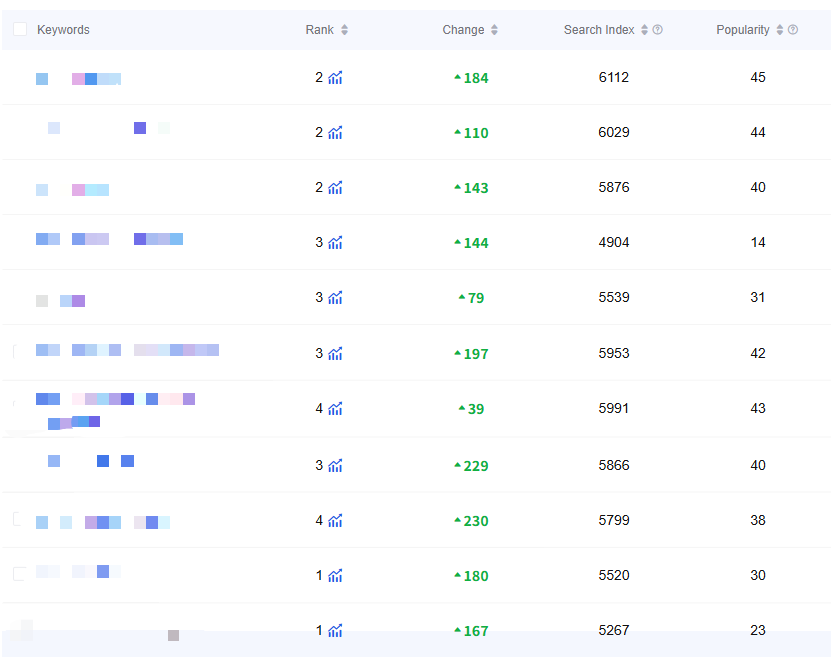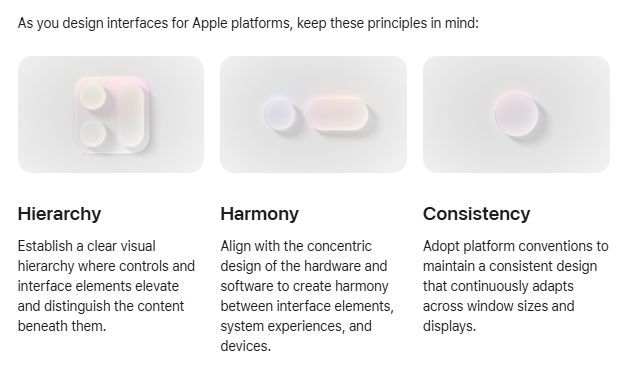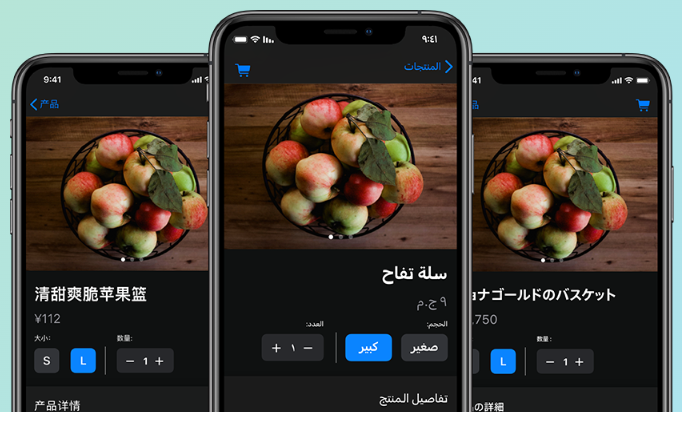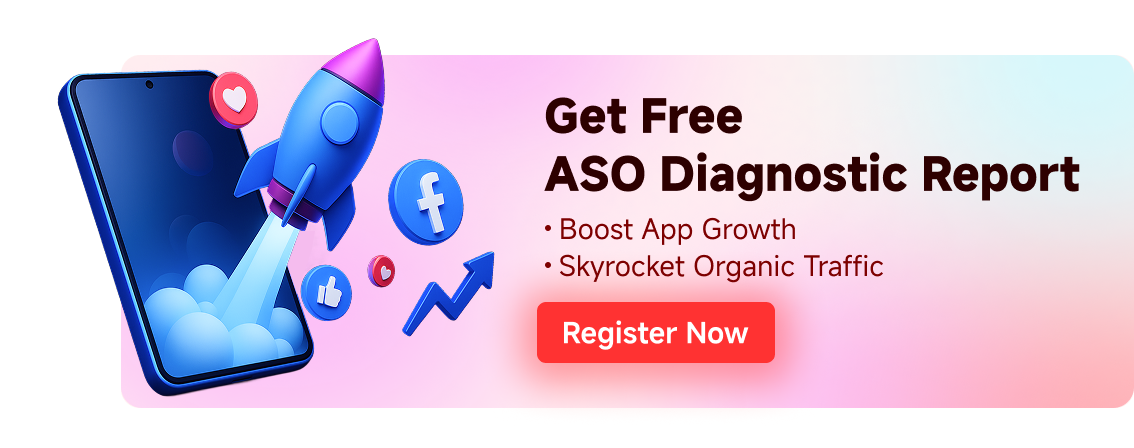Free consultation with ASO specialists
Doing ASO for the first time or have no idea how to carry out targeted optimization of your app?
We offer one-on-one customized services provided by app marketing specialists
Small Budget, Big Impact: A Practical Framework for Rapid Customer Acquisition through Low-Cost ASO for New Apps
2025-09-12
Introduction
In today's increasingly competitive mobile app market, it's no easy feat for new apps to stand out. Especially for developers with limited budgets, acquiring users at a low cost is a major challenge. App Store Optimization (ASO), as a core method for enhancing app visibility and download numbers, is an effective way to gain users on a small budget. This article will delve into how to leverage ASO to achieve user growth within a constrained budget and provide actionable strategies.
The Importance of ASO in User Acquisition with a Small Budget
For new apps with limited budgets, the importance of ASO goes without saying. App stores are the primary channel through which users discover new apps; in Apple's App Store, as many as 65% of downloads come directly from search results. This means optimizing your app's ranking and visibility in the store can bring a steady stream of organic traffic, without relying on costly advertising campaigns.
The reason ASO has become a breakthrough tool for small budgets is that it targets the algorithms and user behaviors within app stores themselves. By optimizing an app's metadata—such as its title, keywords, description, and screenshots—developers can improve its ranking in relevant searches, attracting more potential users to click and download. This optimization requires relatively low investment, mainly in terms of time and effort, yet it can yield long-term benefits. As industry experts have pointed out, "Achieving a high ranking in app stores is a key factor for an app's success." Especially in 2025, when competition in the app market is fiercer than ever, with new apps emerging constantly, even an excellent product may get lost in the sea of apps without a proper ASO strategy. Therefore, small-budget teams should especially view ASO as their primary strategy for acquiring users, leveraging fine-grained operations of app store pages to drive user growth.
A Practical Framework for Low-Cost ASO to Quickly Acquire Users
To achieve ASO user acquisition with "small budget, big impact," a systematic and practical framework is required. Below, we will elaborate on specific strategies and operational methods in six aspects: keyword optimization, metadata writing, visual asset optimization, user Reviews management, localized operations, and data monitoring and iteration.
-
Keyword Optimization: Precise word selection to capture search traffic
Keyword optimization is a core component of ASO, directly determining the visibility of an app in search results. For new apps with limited budgets, developing a precise keyword strategy is crucial, and its basic process includes the following steps:
-
Keyword mining: Focusing on the core features of the product and the needs of target users, we comprehensively utilize ASO tools (such as UPUP) to mine an initial keyword database, while also gathering potential search terms from user Reviews and competitor Keywords.
-
Keyword selection and strategy focus: Priority should be given to keywords with high relevance, moderate search volume, and relatively low competition, avoiding blindly chasing highly popular "broad keywords" that are already monopolized by leading products. It is recommended to focus on long-tail keywords and vertical-scene keywords; for example, fitness apps can target more specific queries such as "ancient fitness methods" to precisely capture the intended audience.
-
Keyword layout: Incorporate the filtered keywords into the metadata in a reasonable manner.
-
As the position with the highest weight, the title should include core keywords while remaining concise.
-
Important functional words can be added in the subtitle and short description;
-
The keyword field in the Apple App Store is used to enter other highly relevant terms, paying attention to comma separation and character limits.
-
Keywords should also be naturally incorporated into the long description on Google Play to enhance search matching.
-
When laying out, we should follow the principle of "natural integration and highlighting key points," avoiding piling up elements to prevent being judged as a violation.
Finally, the keyword strategy requires continuous monitoring and iteration. As search trends and user behavior are constantly evolving, it is important to regularly use ASO tools to track keyword rankings and traffic performance, and promptly replace ineffective terms. Through systematic keyword optimization, new apps can gradually improve their target keyword rankings and achieve steady growth in organic traffic.
Are you wondering which keywords can bring the most downloads for your app? OurKeyword Ranking Improvement ServiceLeveraging advanced AI algorithms and manual optimization, we help your app achieve higher rankings for targeted keywords. Contact us today to customize an exclusive keyword optimization plan, enabling more potential users to discover your App.

-
Metadata Writing: Highlight Selling Points, Boost Conversions
Metadata are key elements on app store pages that influence search rankings and user conversion rates, including the title, subtitle, and app description. With a limited budget, well-designed metadata copy can effectively attract users and increase their willingness to download, making it an important strategy for acquiring customers at low cost.
-
Title: As the user's first point of contact, the title should balance keywords and value proposition within a limited number of characters. It should clearly convey the app's core features and highlight its unique advantages. The title should be concise and straightforward, avoiding lengthy or vague expressions.
-
Subtitle/Short Description: Used to further complement the title, highlighting the app's core features or usage scenarios. While conveying functional keywords, it also emphasizes differentiating advantages. This type of text should be highly concise, aiming to capture users' attention within a limited number of characters.
-
App description: It is recommended to use the "inverted pyramid" structure for writing:
-
The opening section should directly address the user's pain points or clarify the core value to spark interest in continuing to read;
-
Then, elaborate on the main functions and their practical benefits for users in a concise and impactful manner.
-
You can add a call-to-action at the end to encourage users to download and experience it.
-
The overall text should maintain smooth and persuasive language, incorporating keywords appropriately without forced repetition. You may use emojis or paragraph breaks to enhance readability, but ensure compliance with store guidelines.
Especially for apps with small budgets, metadata copy should always focus on the app's unique selling points and user value. It's essential to fully explore differentiating advantages and reinforce them repeatedly in the title and description. By accurately conveying product value, users can quickly resonate during browsing, effectively boosting click-through and conversion rates.
-
Visual content optimization: Design eye-catching visuals to resonate with users
Visual assets are key factors influencing users' first impressions and conversion decisions on app store pages, including icons, screenshots, and preview videos. High-quality visual design can quickly capture users' attention and effectively communicate the core value of the app, thereby significantly boosting download conversion rates.
-
App icon: As the brand's first visual touchpoint, it should be simple and eye-catching, aligned with the product positioning, and highly recognizable. When designing, follow the platform's size specifications, avoid overly complex elements, and adopt a color scheme that matches the product attributes. The core goal is to achieve a unified balance between visual memorability and functional recognition.

-
Screenshots and preview videos: Used to visually demonstrate the app interface, functional flows, and usage scenarios. It is recommended to include 3–5 high-quality screenshots, each focusing on a core feature or user benefit, accompanied by concise text highlighting key value points. If conditions permit, consider creating a short and impactful app preview video that dynamically showcases typical usage paths and product highlights. Data shows that adding a video can significantly boost conversion rates for complex apps or products with high interactivity.
Visual design should always be user-centered, presenting content through scenario-based and narrative approaches. For example, recipe apps can highlight beautiful images of finished dishes and cooking instructions, while productivity tools can emphasize the sense of accomplishment brought by task management. Additionally, it's important to consider aesthetic differences among users in various markets; for instance, European and American users tend to prefer a simple and intuitive style, whereas Asian users may favor information-dense and vividly colorful presentations.
It is worth emphasizing that visual optimization often leads to rapid improvements in conversion rates. Even with limited resources, we recommend prioritizing the quality of visual materials. Consider outsourcing or using template tools to achieve professional-level output while keeping costs under control.
-
User Reviews Management: Word-of-Mouth Rules, Enhancing Trust
User Reviews and Ratings are key factors influencing app credibility and download conversion rates, and they are also an indispensable part of the ASO system. Especially for new apps, accumulating a sufficient number and quality of positive Reviews early on is crucial for building user trust. We can systematically manage user Reviews from the following aspects:
-
The Importance of Reviews and Early Strategies
Users heavily rely on Ratings and Reviews when making download decisions; low Ratings or sparse Reviews can significantly reduce the willingness to convert. In the initial phase, priority should be given to obtaining genuine positive Reviews from beta testers and core communities to establish foundational credibility. Timely and non-intrusive Rating prompts can be strategically placed at key completion points within the app to encourage satisfied users to participate in Reviews.
-
Reviews maintenance and feedback response
-
Negative Reviews should be responded to promptly and publicly, expressing gratitude and outlining plans for improvement, in order to reassure users and demonstrate the team's sense of responsibility.
-
You can also express gratitude for positive Reviews to enhance users' sense of belonging;
-
More importantly, continuously optimize the product based on feedback, fix frequently occurring issues, and clearly mark them in the update log, forming a positive cycle of "feedback-improvement-publication."
-
-
Long-term value and low-cost investment advantages
Although user review management primarily focuses on time and service costs, it can significantly enhance app credibility and download conversion efficiency. An app image built jointly by high Ratings (such as 4.5 stars or above) and positive Reviews is more likely to gain the trust of new users, making it an important strategy for achieving sustainable growth on a small budget.
Through systematic, compliant, and user-feedback-responsive review management, the new app can effectively enhance trust and conversion rates on its store page within a limited budget, laying the foundation for long-term growth.
-
Localized Operations: Tailoring to Local Conditions, Expanding the Market
Localized OperationsIt is an important strategy for expanding into multilingual markets and improving ASO performance, especially suitable for apps whose target users are distributed across different countries or language regions. Through systematic localization adaptation, it can not only enhance search visibility but also significantly boost user trust and willingness to download.
-
Market Selection and Prioritization Strategy
With limited resources, priority should be given to markets with a large user base, high growth potential, and strong product fit. You can use the ASO tool UPUP to analyze download trends and search popularity in different regions, thereby identifying key localization directions. For example, if your app targets English-speaking users, markets like the U.S. and the U.K. should be your top choices; if Southeast Asia performs exceptionally well, prioritizing Indonesian or Thai localization would be advisable.
-
Deep localization of keywords and copywriting
-
Re-conduct keyword research for different languages, using locally common search terms. For example, "bookkeeping" is commonly translated as "budget tracker" in English, while in Spanish it is "control de gastos";
-
The description of functional selling points should align with cultural perceptions. For example, health-related apps can emphasize "scientific endorsement" in Europe and America, while focusing on "traditional wellness practices" in Asia.
-
Incorporate the optimized keywords naturally into the title, subtitle, and description to enhance regional search matching.
-

-
Visual Materials and Cultural Adaptation
-
All text-based materials need to be translated and their layout adjusted to suit linguistic preferences.
-
Characters, scenes, symbols, and other elements in images and videos should conform to local cultural norms and aesthetic preferences.
-
Differentiated screenshots can be customized for different markets, highlighting features that local users care about. For example, food delivery apps can showcase regionally distinctive dishes.
-
-
Leverage store features to boost local conversions
For example, Apple's App Store Custom Product Page (CPP) feature allows creating customized landing pages for different regions, enabling flexible display of descriptions, screenshots, and videos tailored to local needs, significantly boosting page conversion rates.
-
Low-cost phased advancement strategy
Localization requires certain resources, but it can be done step by step: first complete localization for core markets, and after accumulating user feedback and data, gradually expand to other regions. This strategy is especially suitable for teams with limited budgets, enabling a globalized start under controllable costs.
By implementing localized operations through the system, the app can achieve better search rankings and user trust in different regional markets, supporting sustainable international market growth.
-
Data Monitoring and Iteration: Continuous Optimization, Striving for Excellence
-
Key Metric Tracking and Analysis
Leverage official platforms (such as "Store Analytics" in App Store Connect or user acquisition reports in Google Play Console) to monitor key metrics, including keyword search volume, ranking changes, page conversion rates, and download numbers. By analyzing keywords with high search volume but low rankings, or store pages with insufficient conversion rates, you can identify weaknesses in your current ASO strategy and clarify optimization priorities.
-
Deepen insights with third-party tools
Using tools like UPUP can provide more comprehensive data dimensions, such as competitor keyword strategies, creative design, and regional search trends. By comparing with the ASO practices of leading products in the industry, you can identify optimization directions for yourself, including expanding high-value keywords and optimizing page presentation strategies.
-
Continuous iteration and experimental optimization
Continuously adjust ASO strategies based on data-driven insights, including optimizing keyword placement and metadata copywriting; updating visual assets such as screenshots and videos; and refining product features and descriptions to align with user feedback. After each change, evaluate the results, retain effective strategies, promptly discontinue ineffective attempts, and establish an agile, evidence-based optimization mechanism.
-
Responding to platform algorithm and policy changes
Closely monitor algorithm updates and policy adjustments in the Apple and Google stores (such as changes in search weighting and iterations of display rules), and stay synchronized with industry media through official channels. Timely adaptation to these changes can prevent ASO effectiveness from declining and maintain long-term competitiveness.
In the ASO process, data serves as the foundation for decision-making, and iteration is the path to improvement. By establishing a systematic monitoring framework and an agile response mechanism, even teams with limited resources can gradually increase the proportion of organic traffic and improve customer acquisition efficiency, achieving sustainable growth.
Common Misconceptions and Pitfall-Avoidance Guide for Low-Cost ASO
In the process of practicing low-cost ASO, new app teams tend to fall into certain pitfalls, leading to poor optimization results or even counterproductive outcomes. Below are several common misconceptions and corresponding advice to avoid these issues:
-
Myth 1: Blindly chasing high-popularity keywords while ignoring users' true intentions
Some teams blindly pursue keywords with high search volumes, ignoring whether these keywords align with their app. As a result, even if they rank at the top, the users they attract are not targeted, leading to a high churn rate after download.
Avoidance guide: When selecting keywords, focus on relevance and alignment with user intent. Prioritize words that clearly point to your app's features when users search, rather than simply chasing popularity.
-
Myth 2: Ignoring differences among app store platforms and using a one-size-fits-all strategy
Apple's App Store and Google Play differ significantly in terms of algorithms and user behavior. For example, the keyword field exists only in the App Store, while the Play Store places more emphasis on keywords in descriptions and Reviews. Some developers fail to differentiate between platforms and simply copy ASO content, which diminishes the optimization effect.
Avoidance Guide: Tailored for Different PlatformspoorAlienated ASO strategy. Study the rules and user preferences of each platform, and optimize keyword placement and creatives accordingly. For example, fully leverage the keyword meta-fields on the App Store, while focusing on optimizing the long description and user Reviews on the Play Store.
-
Myth 3: Optimize only once and then leave it alone.
Some teams perform ASO optimization once when their app is launched, and then stop updating metadata or paying attention to ranking changes. However, the app store environment is constantly evolving, competitors are taking action, and user preferences are shifting; without continuous optimization, you'll fall behind.
Avoidance Guide: Treat ASO as an ongoing iterative process. Regularly check keyword rankings, download numbers, and conversion rate data, and adjust your strategy accordingly. Review ASO performance at least once a month, and optimize store page content promptly after major version updates or marketing campaigns.
-
Myth 4: Ignoring visual and user experience, focusing only on text optimization
Some developers focus too much on keywords and descriptive text, while neglecting the importance of visual elements such as icons and screenshots. As a result, their apps appear in search results, but users abandon the download after clicking into the detail page due to poor visuals.
Guide to Avoid Pitfalls:Both text and visuals need to be strong. While optimizing metadata, put effort into designing high-quality icons and screenshots. You can use A/B testing to compare different screenshot versions and see which one improves conversion rates more effectively. Remember, users are "visual creatures," and attractive, clearly informative visuals can significantly boost download conversions.
-
Misconception 5: Neglecting the maintenance of user Reviews and Ratings
Some teams believe that as long as they optimize their search rankings, user Reviews don't matter much, or they respond negatively when receiving poor Reviews. This can lead to low app Ratings, which in turn affects search rankings and user trust.
Avoidance Guide: Incorporate user Reviews management into your daily ASO tasks. Actively encourage satisfied users to leave positive Ratings, and promptly respond to and address negative Reviews. Maintaining an app Ratings of 4 stars or higher can significantly help improve search rankings and conversion rates.
By avoiding the pitfalls mentioned above, new app teams can steer clear of detours and make their ASO strategies more effective. Remember, the core of ASO lies in understanding users and adhering to platform rules; no amount of shortcuts or tricks can be as reliable as genuine optimization efforts.
Concluding remarks
For new apps, achieving "big impact with a small budget" is not an impossible goal; the key lies in finding an efficient growth path. App Store Optimization (ASO) is precisely such a path—by carefully refining app store pages, new apps can acquire a steady stream of organic users at a relatively low cost. From keyword selection to copywriting, from visual design to user Reviews, optimizing every ASO detail has the potential to boost download numbers. As emphasized in this article, ASO is an ongoing iterative process that requires continuous strategy adjustments based on data in order to remain competitive in the fiercely crowded app market.
If you're a new app developer struggling with user growth, why not take action right away and start by optimizing your app store page? Click the button below to get a free ASO health diagnosis for your app. Our experts will evaluate your app'sKeyword coverage, metadata quality and visual assets, and provide improvement suggestions. This is the first step towards ASO success!
Remember, in the vast ocean of mobile apps, optimizing your app store page is the best advertisement. With the practical framework provided in this article, we hope you can find an ASO strategy that suits your app and achieve a significant breakthrough in user growth on a small budget. Start taking action now to make your new app stand out in the app store and reap the success it deserves!
Related recommendations

